In 2023, 4.3 billion people worldwide — half the world’s population — used email. By the end of 2026, that number is expected to be 4.7 billion, with more users and each user having multiple email accounts.
Bottom line, getting email right is key to better marketing results. In 2023, the average results for email campaigns were:
- Open rate: 31%
- Click-through rate: 34%
- Leads or conversions from email: 27%
- Traffic from email campaigns: 20%
And while these numbers look good, there’s always room for improvement. And the best place to start is email personalization.
What Is Email Personalization?
Email personalization is the practice of adding variables to the subject line, greeting, or body text of an email to add personal data or information that’s specific to each user.
These variables may be the user’s name, company name, geo-location, previous purchases, etc. — basically any data you have stored in your email list.
For example, you can personalize the subject line to ensure your email catches the eye:

You can also personalize the salutation. While this is a common way to personalize your emails, not every brand does this, so it can still improve engagement.
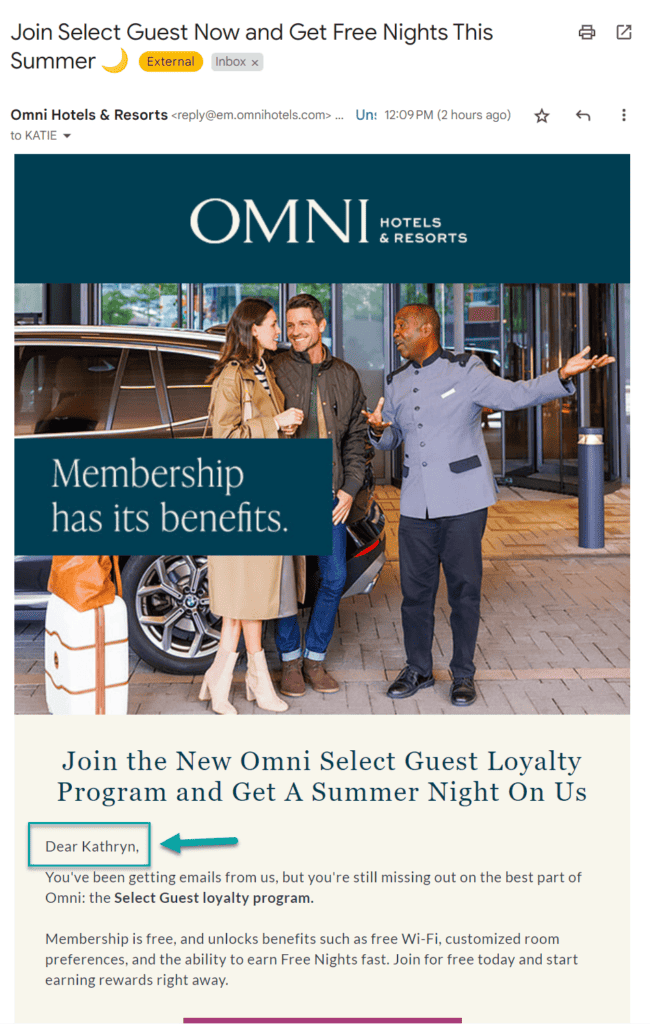
Another way to personalize your emails is to base it on the customer’s behavior on your website. This has become standard practice for many ecommerce brands because the email reflects the customer’s current interests:
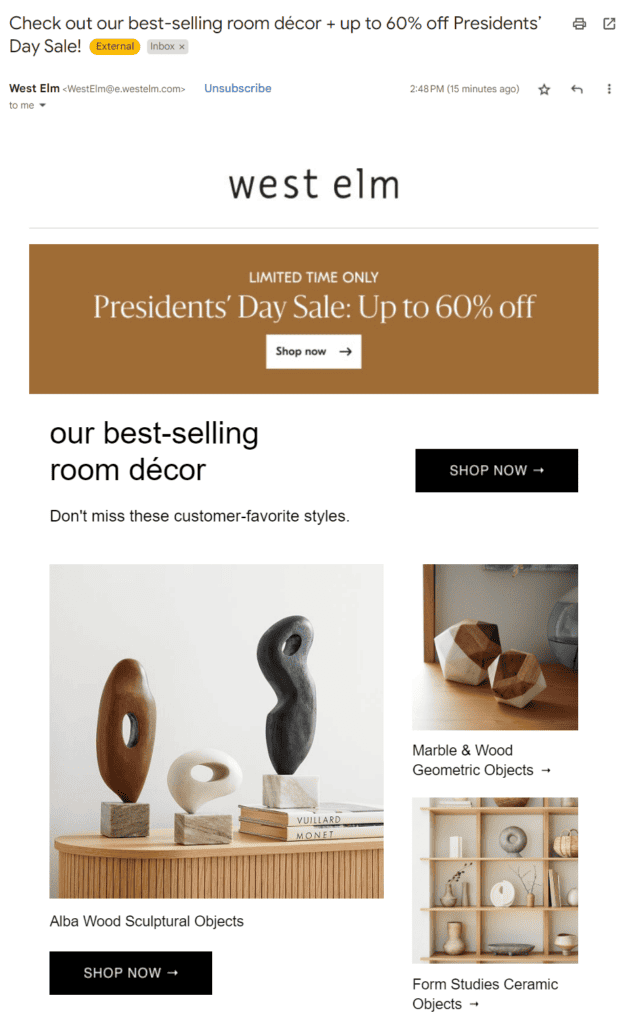
Why Use Personalization?
Personalization can make business emails appear more relevant and trustworthy:
- 56% of consumeres say they will become repeat buyers after a personalized experience.
- 62% of consumers expect personalization and will leave a brand if the experience isn’t personalized.
- 69% of businesses are increasing their investment in personalization.
And the results speak for themselves:
- Segmented email campaigns get 30% more opens and 50% more clicks than unsegmented campaigns. (Mailchimp)
- Email list segmentation is seen as the most effective email personalization tactic by 51% of marketers. (Ascend2)
- Personalized subject lines lift open rates by 50%. (MarketingSherpa)
Personalization is a small tweak to your email strategy that can make a big bottom-line impact. So let’s look more closely at how you can leverage personalization.
Email Personalization: Overview
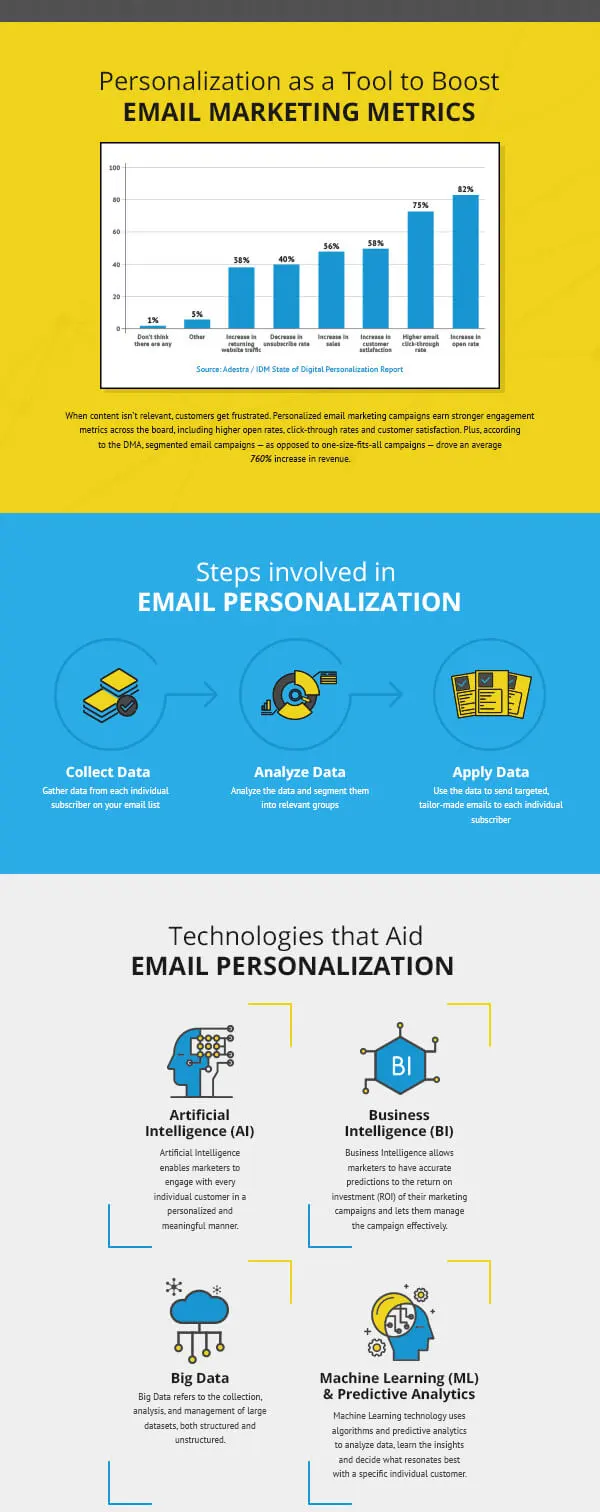

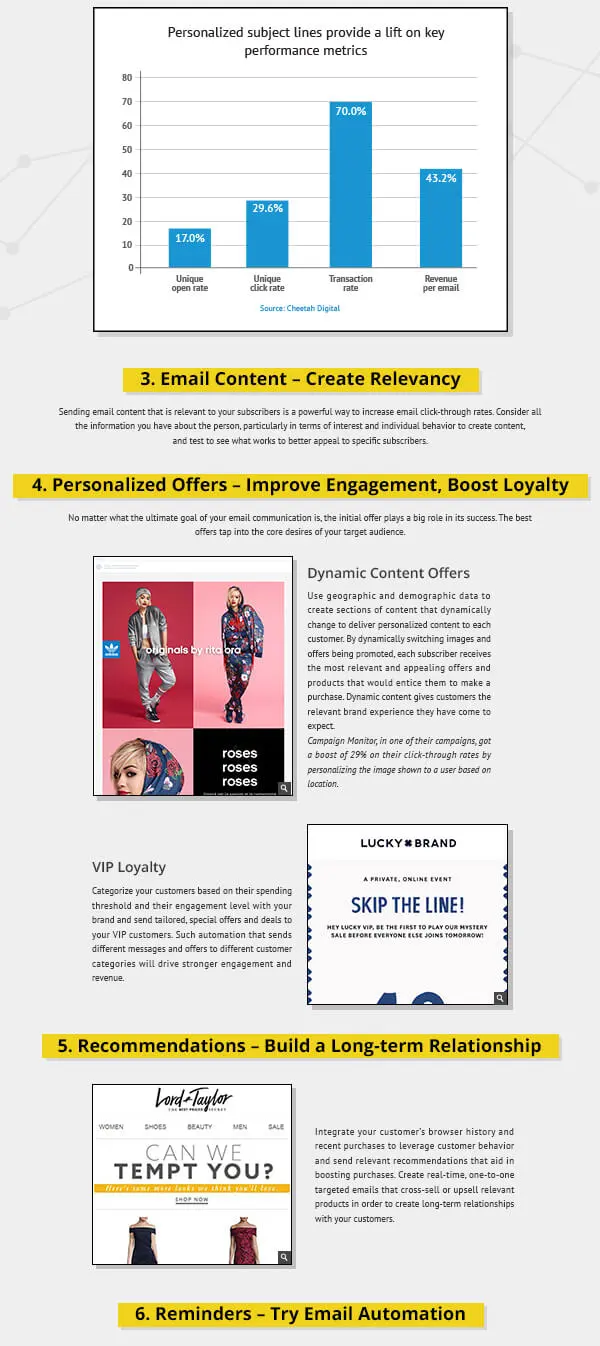
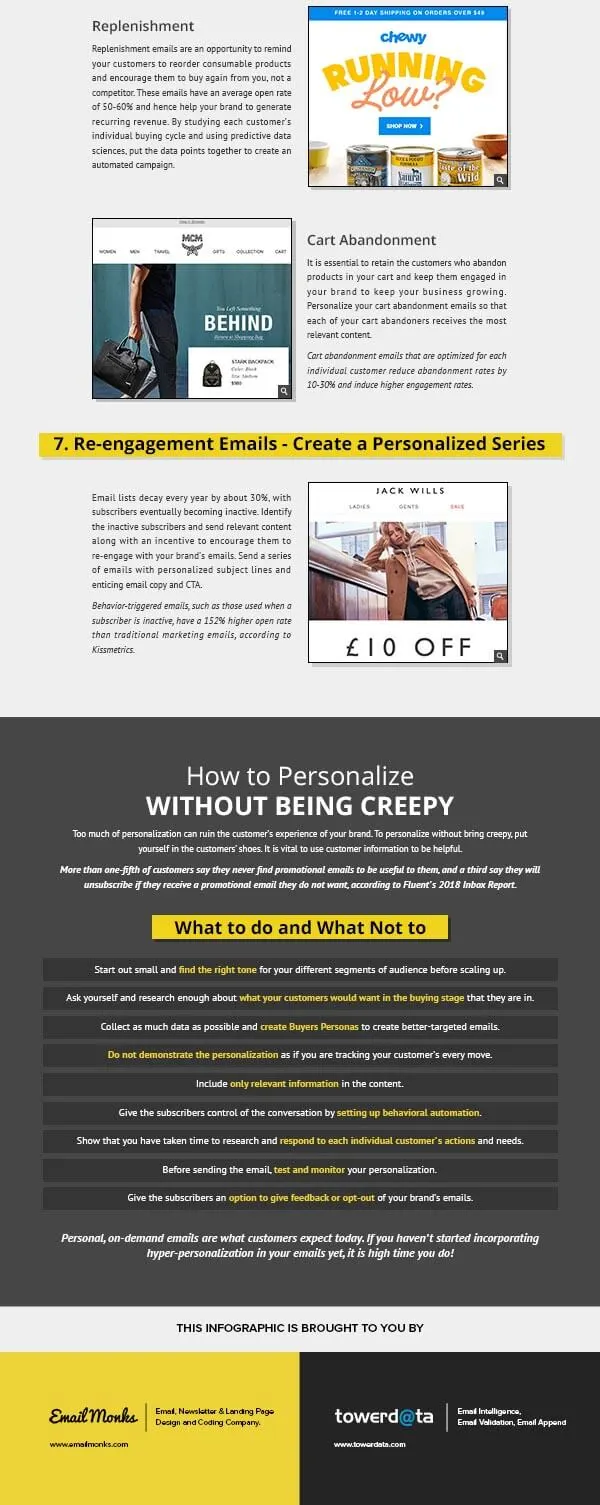
How to Personalize Your Email Campaigns
I get it…
The question isn’t whether you should personalize your emails. It’s how.
For 66% of marketers, one of the big struggles with personalization is securing internal resources to execute personalized marketing programs. And for solopreneurs and small businesses, I think it’s even more of a struggle. Simply affording smart technology is a challenge.
Even so, we need to do what we can to make our emails more personal and engaging.
Most email services have the functionality to personalize emails. You may not be able to automate product recommendations like Amazon, but you can use basic personalization techniques that make your subscribers feel like you know them are care about their situation.
To start, use these personalization best-practice tips
Use real first names. On subscriber forms, you want to ask for as little information as possible, but asking for someone’s name isn’t asking too much. And it’s vital to your email personalization efforts.
Limit each email to two to three personalizations. You don’t need to add every personalization tactic available to you. Just a few touches here and there will keep your emails personal and relevant.
Go beyond “first name” personalization. It’s just as important to personalize email content based on the users’ history or behavior. Think about how you might talk to a trial user who is active in your SaaS product versus one who has never logged in.
Personalize the subject line. Personalized subject lines deliver 26% higher unique open rates overall. And as mentioned above, it helps you email stand out in the inbox.
Most importantly, don’t forget that email isn’t a stand-alone marketing channel. It needs to work together with the rest of your marketing.
Need help with your email marketing or integrated marketing strategy? Contact me today for a free consultation.


